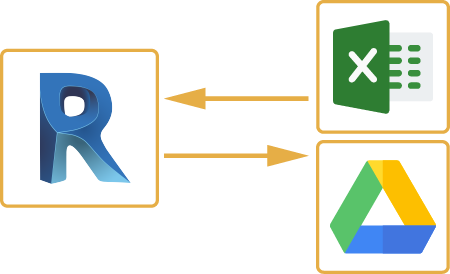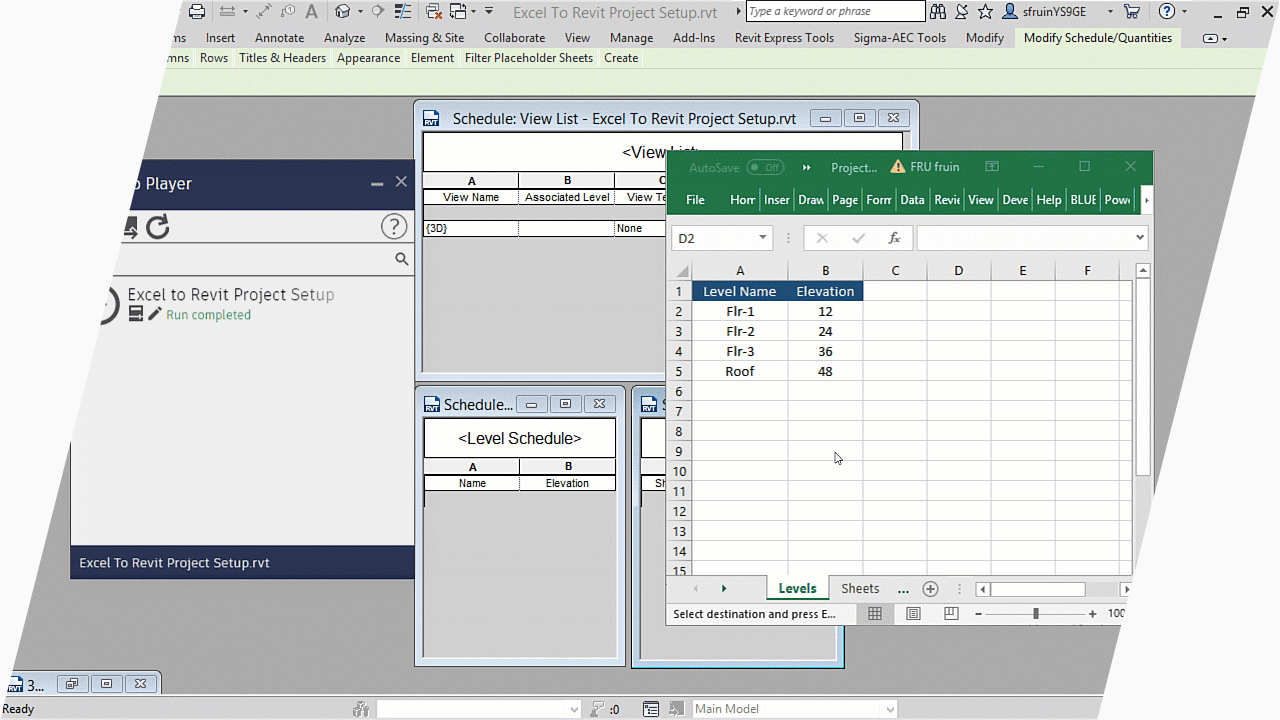Open New Possibilities with Cutting-edge Revit Plugins
Wiki Article
Breaking Obstacles: Excel Importation Techniques for Advanced Revit Users
Discover different data importation techniques and master Excel integration to boost your Revit modeling capacities. With our ideas and tricks, you can conquer importation difficulties and come to be a real professional in utilizing Excel for your Revit jobs.Advanced Revit Users: Leveraging Excel for Importation
You can quickly utilize Excel for importation as an advanced Revit customer. Excel is a powerful device that can considerably improve your workflow and efficiency in Revit. With its capability to take care of big amounts of data and perform complex calculations, Excel can be an useful asset in handling and arranging your task details.One method to leverage Excel for importation is by utilizing the "Web link Excel" attribute in Revit. This function enables you to link an Excel spreadsheet directly right into your Revit project, enabling you to upgrade and integrate data between both programs. When dealing with routines or tracking adjustments in your task., this can be particularly helpful.
One more way to use Excel is by utilizing the "Import/Export" feature in Revit. This function permits you to import and export data in between Revit and Excel, giving you the versatility to deal with data in both programs. You can import information from Excel into Revit to develop aspects such as areas, doors, or walls, and you can additionally export data from Revit to Excel for additional evaluation or coverage.

Exploring Data Importation Approaches in Revit Making Use Of Excel
Discovering how to import information from Excel right into Revit provides efficient methods for integrating info. When you import data from Excel, you can perfectly transfer data such as area routines, product listings, and tools information into your Revit job. This procedure enables you to conserve effort and time by staying clear of manual data access.To import data from Excel into Revit, you can make use of the "Import/Export" function. This function enables you to map the Excel information areas to the matching Revit criteria, ensuring that the details is appropriately designated within the model. By choosing the ideal import options, you can control exactly how the information is imported and how it connects with your project.
An additional approach for importing data from Excel right into Revit is by making use of Dynamo. With Dynamo, you can develop custom-made scripts that import information from Excel and manipulate it within your Revit job.
Grasping Excel Assimilation for Advanced Revit Modeling
Mastering Excel assimilation for sophisticated Revit modeling entails using effective techniques to flawlessly transfer information and automate jobs within your task. By taking advantage of the power of Excel, you can enhance your Revit modeling process and conserve valuable time. One vital method is importing information from Excel spread sheets directly into your Revit design. This enables you to inhabit parameters, such as area names or product quantities, effortlessly. With a few basic actions, you can map the Excel columns to the equivalent Revit criteria and import the information precisely.An additional valuable technique is exporting data from Revit to Excel. This allows you to remove info from your version, such as routines or material amounts, and evaluate it in Excel using formulas, graphes, or various other effective tools. By leveraging the abilities of Excel, you can execute intricate computations, produce custom-made reports, and gain important understandings right into your job.
In enhancement to data transfer, Excel integration can automate recurring jobs in Revit. By producing macros or scripts in Excel, you can automate processes like developing views, generating sheets, or applying conventional households - revit tool. This not only saves time yet additionally guarantees uniformity throughout your job
To understand Excel combination in Revit, it is essential to recognize the data framework and just how Revit engages with Excel. By acquainting yourself with the available devices and methods, you can open the complete potential of Excel assimilation and take your Revit modeling to the next level.
Conquering Importation Challenges: Excel Techniques for Revit Professionals
When getting rid of importation difficulties, it's essential to be familiar with effective Excel techniques that can benefit experts in Revit. As an advanced Revit individual, you comprehend the importance of flawlessly importing information from Excel right into your jobs.
One more beneficial strategy is using the "Transpose" feature in Excel. This enables you to convert data from rows to columns or vice versa. When importing information right into Revit, this can be particularly handy when you have information in an upright style in Excel, however you need it to be in a straight layout in Revit.
Moreover, using Excel formulas such as VLOOKUP and INDEX-MATCH can substantially aid in mapping information from Excel to Revit. These solutions allow you to look for details values in Excel and obtain matching information from one more column. This can conserve you time and initiative when importing big datasets into Revit.
Excel Information Importation Idea for Advanced Revit Users
By acquainting yourself with efficient Excel ideas and techniques, you can improve your data importation procedure as an innovative individual of Revit. In addition, making use of Excel's "Paste Special" feature permits you to paste information from Excel into Revit while maintaining format, such as cell shade or font design. One more useful method is to use Excel's "Find and Change" feature to rapidly make adjustments to your information prior to importing it into Revit.
Conclusion
You have actually now found out beneficial methods for importing data from Excel right into Revit as an advanced individual. Go ahead, damage those barriers and excel in your Revit jobs!
When importing data into Revit, this can be particularly practical when you have information in a vertical layout in Excel, however you require it to be in a horizontal layout in Revit.
Furthermore, making use of Excel solutions such revit plugins as VLOOKUP and INDEX-MATCH can greatly assist in mapping information from Excel to Revit. Additionally, making use of Excel's "Paste Unique" function allows you to paste data from Excel right into Revit while maintaining format, such as cell shade or font style.
Report this wiki page